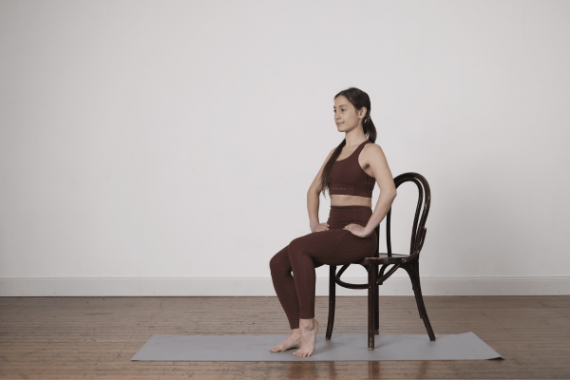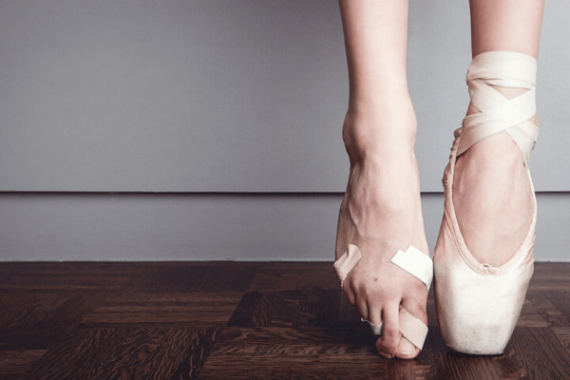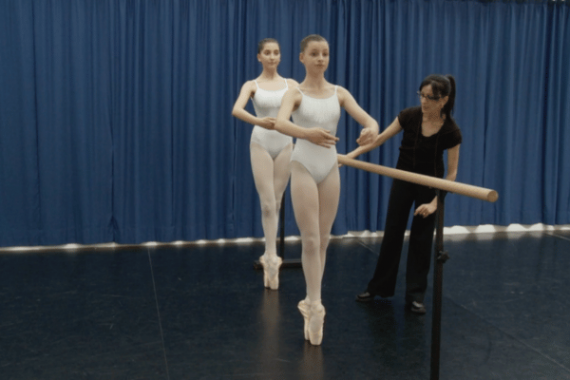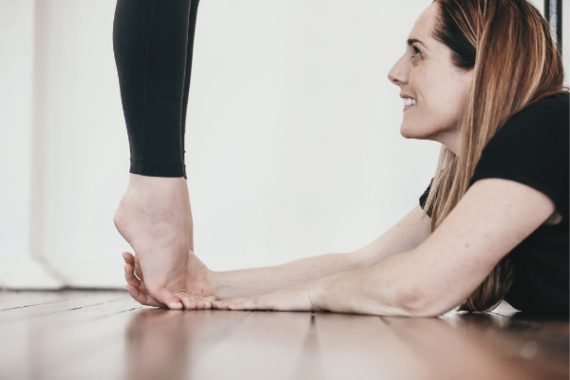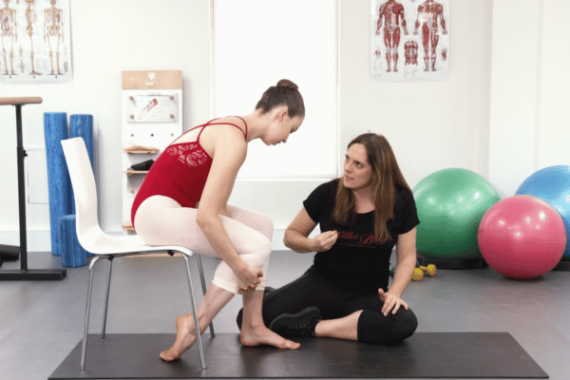Padding for Pointe Shoes
The 'Padding for Pointe Shoes,' video explores the different options and personal preferences for pointe shoe padding.
You will find explanations of the various in-store and at-home methods that dancers use including the different types of 'ouch pouches,' and 'toe socks' for problem toes. It includes techniques to prevent blisters and foot irritation as well as tips for dancers who prefer to minimise the amount of padding used for a more true fit of the pointe shoe.
While the justification for it says that it is better due to the fact that it ‘fills in the gaps’, rather than padding up the pressure areas, the thing that I am most concerned about is the amount of padding demonstrated underneath the toes. While the demonstrations encourage the student to work through the shoe as they would when dancing – I am concerned that the all important action of moving from demi-pointe to full pointe using the lumbricals (the small intrinsic foot muscles under the toes) will not be possible if not performed correctly in the very beginning.
Most issues with pain in the toes en pointe is due to the knuckles curling and then rubbing on the front of the shoe. If you put a cushion in front of those bent knuckles, it prevents the pain but does not actually correct the real issue, which is the clawing of the toes. This simple movement is often a consequence of incorrect training and may lead to various issues of the long flexor tendons (FHL, FDL etc), so I prefer to use any rubbing of the knuckles as a sign that the dancer needs to correct the mechanics of the pointed foot, rather than just putting something in to avoid the pain.
The basic hygiene factor is something that also worries me with both regular toe pads and these silicon mould. A dancer’s foot sweats considerably, especially when confined in a pointe shoes. We change our regular socks every day, yet the number of students who do not wash their toe pads is appalling. Most of them admit that it never even crossed their mind, and when I mention how often we change our socks, a look of horror crosses their face! I wonder what the advice is in regards to wearing stockings and washing these devices?
'Padding for Pointe Shoes,' aims to inform dancers of these different techniques and options to ensure the dancer maximises their comfort in the pointe shoe and makes an informed decision that works for her!
Notes for padding:
- Try to use as little padding as possible as excessive padding will interfere with your ability to feel the floor and control the front of the shoe.
- The main reason why most dancers need padding is due to their toes clawing in the shoes. Rather than simply padding up the toes, focus on specific strengthening, exercises, finding a great fit of shoe and careful training.
Please consult The Perfect Pointe Book or Advanced Foot Control For Dancers for specific exercises. - Always make sure to remove all padding from shoes to breathe before storing them as the moisture in the toe pads can soften the glue in the pointe shoes (not to mention the smell!)
- Make sure you use all padding that you will be using when dancing when getting your dance shoes fitted as it can take up to half a size in some shoes
If you are looking to delve deeper into this topic, check out the following programs:
- The Perfect Pointe Book: This course was originally designed to help students and dance teachers safely prepare for pointe work. The four stages of tests and exercises within the book are ideal for pre-pointe preparation classes, students close to achieving pointe shoes and students already en pointe looking for extra strength and technique training.
- Pointe Range: This online program comprises of 41 clear and concise videos, totalling just under 2 hours play time, this course begins with a series of assessments to establish exactly what structures are restricting your pointe range. It then explores a diverse array of massage techniques, joint mobility exercises and fascial mobilisers to safely improve your pointe range. This is followed by an in depth look at retraining all of the muscles that stabilise the foot and ankle to allow you to actually use your new found pointe range in class.
- Pointe Intensive: This online virtual workshop is designed for both Dance Teachers & Health Professionals working with dancers. This three day Intensive will give you the most up-to-date advice in the industry to help you understand your students’ needs, analyze their differences, and them you the tools to help your students become the best dancer they can be.



